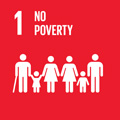- Docente: Rosella Rettaroli
- Credits: 10
- SSD: SECS-S/04
- Language: Italian
- Teaching Mode: Traditional lectures
- Campus: Forli
-
Corso:
First cycle degree programme (L) in
Sociology (cod. 8495)
Also valid for First cycle degree programme (L) in International relations and diplomatic affairs (cod. 8048)
-
from Feb 18, 2025 to May 14, 2025
Course contents
The course is organized with all the lectures taught in presence.
Contents:
a) Sources for demographic and social analysis, international databases.
b) Methodological tools for the measurements of population variables (growth rates; measures for mortality, fertility and migration, population structures and their evolution), census-type data analysis.
c) Population density and its geographical distribution.
d) The development of word population. UN scenarios for the future.
e) The theory of demographic transition.
f) XXth century demographic transitions.
g) Demographic challenges in PVS. The African case.
h) Word summits on population.
i) Economic development and population: Poverty and inequalities.
j) Development indicators and the Millenium Goals.
Readings/Bibliography
Notes published on Virtuale
1) G.A. Micheli, Demografie, McGraw-Hill, Milano, 2011, Capp. Da 1 a 5.
2) A. Angeli, S. Salvini (2018), Popolazione mondiale e sviluppo sostenibile. Crescita, stagnazione e declino, Il Mulino, Bologna.
3) S. Salvini, A. Angeli (2021), Quale «genere» di sviluppo? Le disuguaglianze di genere nella popolazione mondiale, Cleup, Padova
4) A. Rosina, R. impicciatore (2022), Storia demografica d’Italia. Crescita, crisi e sfide, Carocci Editore, Roma.
Teaching methods
Labs will be organized to perform exercises with excel, since the 60 hours of lessons include both theory and exercises
2 partial exams will be organized during the course
All didactic materials and lesson recordings will be available on the "Virtuale" platform
Assessment methods
The exam aims to assess the achievement of the following learning objectives:
- know the main theories on the long period evolution of the population.
- calculate the main demographic indicators.
- interpret the data and indicators on population present in the political and social literature
- know the main international sources of demographic data
- know the demographic transition in the main areas of the world
The examination consists of a written test that the student will perform on the Eol platform. The test is composed by theoretical questions and exercises with which the students can demonstrate that they can apply the methodological tools acquired and interpret the results.
The student can choose whether to take the partial exams during the course or the total exam at the end.
There are 2 partials tests, the first in the middle of the course and the second at the end. To pass the tests, the student must obtain the sufficiency as average, without scoring less than 17 in one of the two tests. It is possible to recover only one partial test (due to absence, unsatisfaction or insufficiency) on the first calendar date of the summer session.
Alternatively, it is possible to carry out the full exam during all the other sessions.
The exams are performed with the use of the Eol platform.
The specific information about tests can be read at: -> organization [https://corsi.unibo.it/laurea/ScienzeInternazionaliDiplomatiche/organizzazione-della-didattica] and found on "Virtuale"
Teaching tools
The slides used during the lessons, the recommended readings and the exercises to be carried out with the relative solutions will be made available on the Virtual platform. Videos when present.
Office hours
See the website of Rosella Rettaroli
SDGs




This teaching activity contributes to the achievement of the Sustainable Development Goals of the UN 2030 Agenda.
